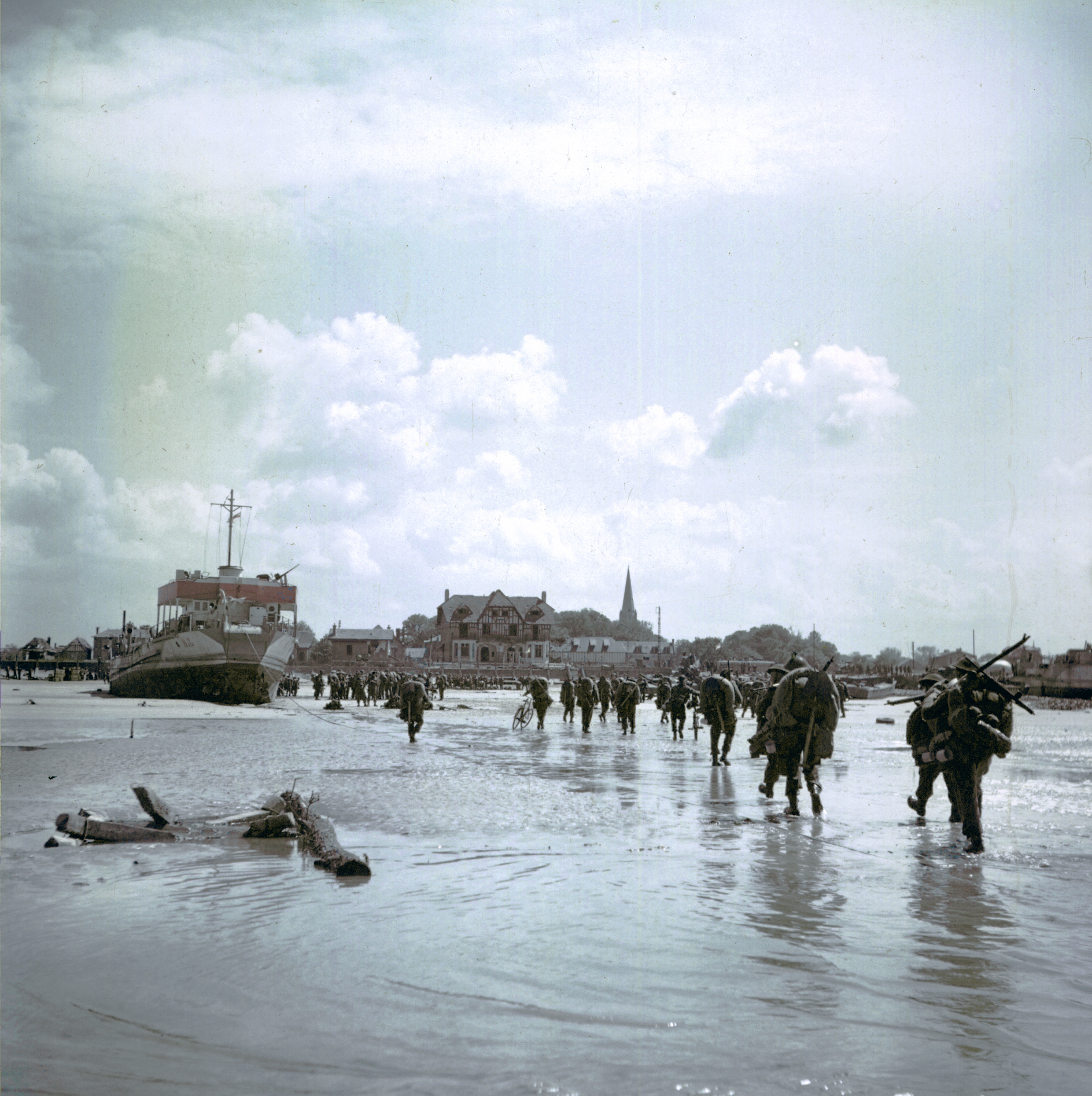Juno Beach
Canadian heroes
Juno Beach occupies a special place in the history of June 6, 1944, the day of the Allied landings in Normandy, marking the beginning of the end of the Second World War in Europe. Located between Sword Beach and Gold Beach, Juno was the target of Canadian forces, supported by British units, as part of Operation Overlord.

The Assault on Juno Beach
On the morning of D-Day, Canadian forces approached the Normandy coast under heavy fire. Despite sturdy German defenses consisting of minefields, machine-gun nests and concrete fortifications, the Canadians managed to break through and advance deeper inland than any other Allied force that day. Their bravery and determination were decisive in establishing a bridgehead in Normandy.
Operation Challenges
The assault on Juno Beach was not without its difficulties. Canadian forces had to overcome physical and environmental obstacles, including high waves and strong currents, which made the landing even more perilous. The use of specialized equipment, such as amphibious tanks and mine-clearing vehicles, was essential to break through the German coastal defenses.
Canadian Heroes
Behind every name engraved on the Juno Beach monuments is a story of courage and sacrifice. Soldiers like Major John Keefer Mahony, who was awarded the Victoria Cross for his heroism under fire at Juno, embody the indomitable spirit of the Allied forces. These stories of personal bravery are at the heart of the collective memory of Juno Beach.
Commemorative ceremonies
Commemorative ceremonies play a crucial role in keeping alive the memory of Allied sacrifice. Every year, especially around June 6, ceremonies are held on Juno Beach and in the surrounding military cemeteries. These solemn events bring together veterans, dignitaries, soldiers’ families and the public to pay tribute to the courageous fighters of D-Day. Moments of reflection, wreath-laying and speeches underline the importance of remembrance.
The importance of the beach to Canada
Juno Beach holds a special place in the hearts of Canadians, symbolizing Canada’s significant role in the liberation of Europe. It is a place of national pride, where Canadian and international visitors can pay tribute to the sacrifices made for freedom.
Points of Interest and Trivia
- Bény-sur-Mer Canadian Military Cemetery: Located just a few kilometers from Juno Beach, this cemetery is the resting place of more than 2,000 Canadian soldiers who fell in the first weeks of the Battle of Normandy. A visit to this cemetery is a poignant moment of meditation and remembrance.
- Juno Park and Memorial des Braves: This commemorative park, near the Juno Beach Centre, pays tribute to the Canadian soldiers who landed on June 6, 1944. The Braves Memorial, comprising three sculptural elements representing hope, fraternity and peace, is a place to reflect on the sacrifice of young soldiers for freedom.
- The Juno Beach Centre: Located directly on the coast at Courseulles-sur-Mer, this center is dedicated to Canada’s history during the Second World War.
Juno Beach Today: Remembrance and Education
Juno Beach is more than just its past; it’s a living place of remembrance and education. This museum and cultural center is dedicated to the history of Canada’s participation in the Second World War, and offers a multitude of interactive exhibits. Visitors of all ages can explore thematic galleries covering a variety of topics, from D-Day preparations to the personal stories of Canadian soldiers. The center also offers specific educational programs for schools, aimed at teaching history in an immersive and engaging way.
The Juno Beach Centre and other local institutions offer a variety of workshops and interactive programs designed to deepen visitors’ understanding of the events of the Second World War. These include workshops on the coding used during the war, the lives of soldiers at the front, and the impact of the conflict on civilians. These programs are designed to stimulate thought and encourage visitors to learn from history.
Visit the beach
Exploring Juno Beach and its historic sites is a deeply moving and educational experience. Whether through guided tours, commemorative ceremonies or simply walking the beach, visitors to Juno Beach can connect personally with the history of D-Day and understand the magnitude of the events that took place on this stretch of sand.
The natural beauty of Juno Beach and its surroundings offers a striking contrast to the historic events that took place there. The surrounding sand dunes, limestone cliffs and lush green fields invite reflection and appreciation of the new-found peace.
Guided tours of the Juno area
Guided tours are offered throughout the year, allowing visitors to explore the key landing sites around Juno Beach. Guided by passionate experts, participants discover German bunkers, the remains of the Atlantic Wall, and the landing zones, while learning about military strategies, the challenges faced by the Allied forces and the heroic tales of the soldiers.
